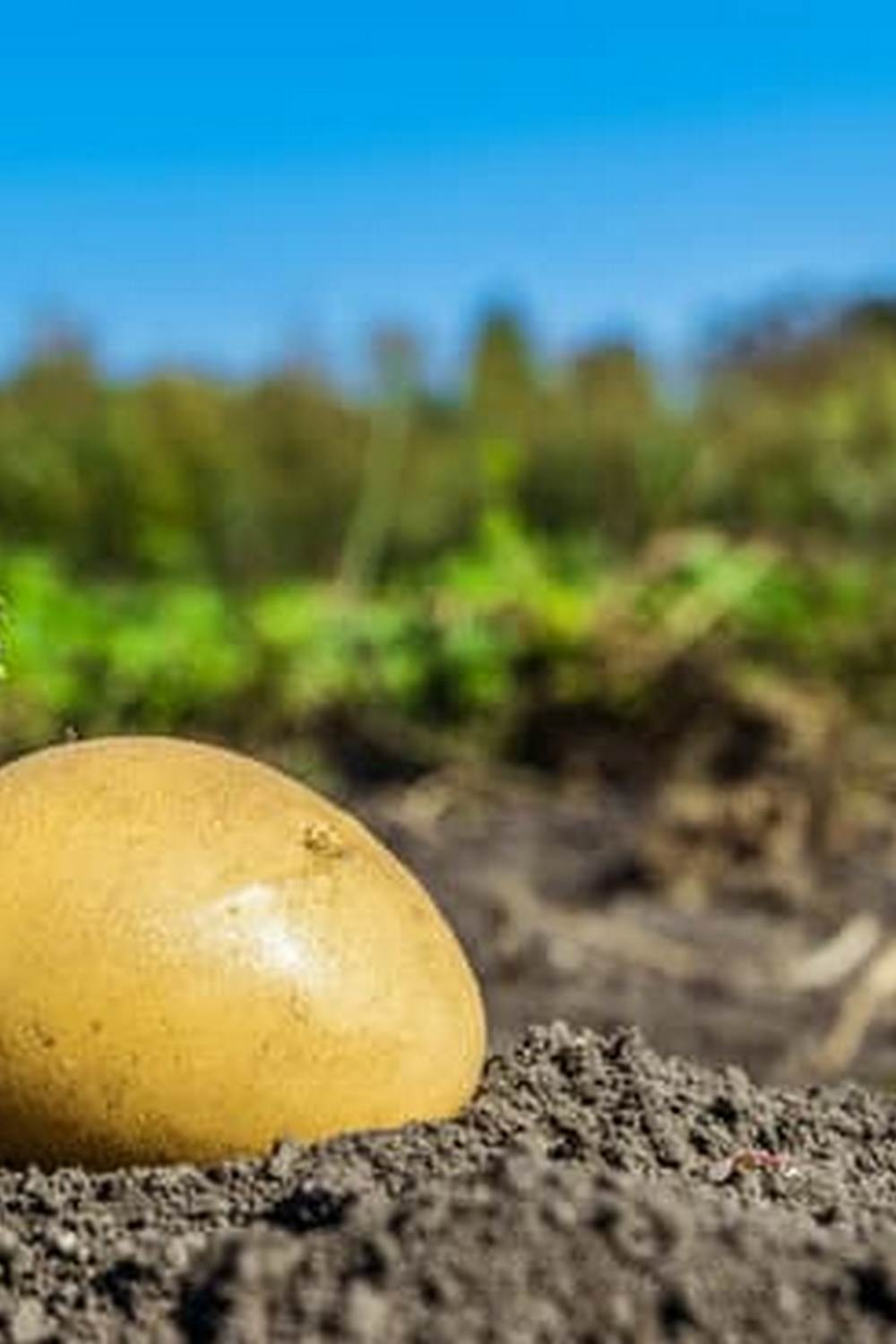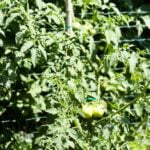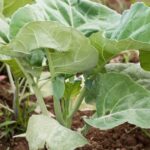Plastic containers for vegetable gardening have become increasingly popular among urban gardeners and those with limited outdoor space. In this article, we will explore the various benefits of using plastic containers for growing vegetables, the types of containers that are suitable for this purpose, and the best practices for choosing the right one. Whether you’re a beginner or seasoned gardener, utilizing plastic containers can be a convenient and practical way to grow your own fresh produce right at home.
One of the key advantages of using plastic containers for vegetable gardening is their versatility and flexibility. Unlike traditional garden beds, plastic containers can be placed on patios, balconies, windowsills, or even indoors, making them accessible to individuals with limited outdoor space. Additionally, plastic containers are lightweight and easy to move around, allowing you to optimize sunlight exposure and water drainage for your plants.
Moreover, plastic containers are durable and cost-effective compared to other materials like clay or ceramic pots. They can withstand various weather conditions and are less prone to cracking or breaking over time.
By choosing the right type of plastic container and following proper care instructions, you can create a thriving vegetable garden that yields a bountiful harvest throughout the growing season. Stay tuned as we delve into the benefits of using plastic containers for vegetable gardening in more detail in the following sections.
Benefits of Using Plastic Containers for Vegetable Gardening
Plastic containers offer a variety of benefits for vegetable gardening enthusiasts, making them an excellent choice for cultivating a vibrant and bountiful garden. One advantage of using plastic containers is their versatility and availability in different sizes, shapes, and colors. This allows gardeners to customize their gardening space according to their needs and preferences.
Additionally, plastic containers are lightweight, making them easy to move around and rearrange as needed. Whether you have limited outdoor space or simply want to add some greenery to your balcony or patio, plastic containers provide a convenient solution for growing vegetables.
Cost-Effective Solution
Another benefit of using plastic containers for vegetable gardening is that they are generally more affordable than traditional planters made of materials like clay or ceramic. This cost-effective option allows gardeners on a budget to expand their growing capabilities without breaking the bank.
Additionally, plastic containers are durable and can withstand various weather conditions, ensuring that your vegetable plants remain protected throughout the growing season. With proper care and maintenance, plastic containers can last for several seasons, providing long-term value for your gardening investment.
Easy Maintenance
One of the key advantages of using plastic containers for vegetable gardening is the ease of maintenance they offer. Plastic pots are non-porous, which means they retain moisture better than other materials like terracotta or clay. This feature reduces the frequency of watering required for your vegetable plants, making it easier to keep them healthy and thriving.
Furthermore, plastic containers are easy to clean and sanitize, reducing the risk of disease or pest infestations in your garden. By choosing high-quality plastic containers and implementing proper watering techniques, you can enjoy a flourishing vegetable garden with minimal effort.
Types of Plastic Containers Suitable for Vegetable Gardening
Plastic containers are a versatile and convenient option for vegetable gardening, offering a wide range of benefits compared to traditional garden beds. When it comes to choosing the right plastic container for your vegetable garden, there are several options to consider based on your specific needs and preferences.
Here are some types of plastic containers suitable for vegetable gardening:
- Nursery Pots: These inexpensive and lightweight containers are perfect for starting seeds or transplanting seedlings.
- Raised Beds: Larger plastic raised beds provide ample space for growing vegetables and can be easily moved around your garden.
- Hanging Baskets: Ideal for small spaces, hanging baskets can be used to grow trailing vegetables like cherry tomatoes or cucumbers.
Picking the right type of plastic container for your vegetable garden depends on factors such as the size of your space, the vegetables you want to grow, and your gardening style. Consider also the material of the plastic container – look for containers made from food-safe, UV-resistant materials to ensure the health and longevity of your plants.
Proper preparation of plastic containers is essential before planting vegetables in them. Make sure to clean the containers thoroughly with soap and water to remove any residue or contaminants that could harm your plants. Additionally, poke drainage holes in the bottom of the container to prevent waterlogging, which can lead to root rot in vegetables. With the right type of plastic container and proper preparation, you’ll be on your way to a successful vegetable garden in no time.
Best Practices for Choosing the Right Plastic Container
Choosing the right plastic container for your vegetable gardening needs is essential to ensure successful growth and development of your plants. Here are some best practices to consider when selecting the perfect plastic container:
- Size Matters: When choosing a plastic container, make sure it provides enough space for the roots of your vegetables to grow. Consider the mature size of the plants you intend to grow and select a container that can accommodate their root system.
- Drainage is Key: Proper drainage is crucial for the health of your plants. Ensure that the plastic container has adequate drainage holes at the bottom to prevent waterlogging, which can lead to root rot.
- Material Quality: Opt for high-quality, sturdy plastic containers that can withstand outdoor elements and UV exposure. Look for containers that are durable and will not deteriorate easily over time.
In addition to these best practices, consider factors such as portability, aesthetics, and cost when choosing the right plastic container for your vegetable gardening needs. By following these guidelines, you can set yourself up for a successful growing season with healthy and thriving plants in your plastic containers.
- Portability: Choose containers that are lightweight and easy to move around, especially if you plan on rearranging your garden or protecting your plants from extreme weather conditions.
- Aesthetics: Select plastic containers that complement your garden design and overall aesthetic appeal. Consider different colors or styles to enhance the visual appeal of your vegetable garden.
- Cost-Effectiveness: Evaluate your budget and choose plastic containers that offer good value for money. Remember that investing in quality containers can pay off in the long run by ensuring durability and longevity.
How to Properly Prepare Plastic Containers for Vegetable Gardening
When preparing plastic containers for vegetable gardening, it is essential to follow some key steps to ensure the success of your plants. The first step is to clean the containers thoroughly before use. This can be done by washing them with soapy water and rinsing them well to remove any dirt or residue that may be present. It is crucial to make sure that no harmful chemicals are left behind that could potentially harm your plants.
Once the containers are clean, it is important to drill drainage holes in the bottom to allow excess water to escape. Proper drainage is crucial for preventing waterlogged soil, which can lead to root rot and other issues that can harm your plants. In addition, adding a layer of gravel or small rocks at the bottom of the container can further improve drainage and prevent soil compaction.
After ensuring proper drainage, it is recommended to fill the containers with a high-quality potting mix specifically designed for vegetable gardening. This type of soil will provide the necessary nutrients and structure for healthy plant growth. It is also advisable to add some organic matter, such as compost or aged manure, to enrich the soil and promote better root development.
By following these steps and properly preparing your plastic containers for vegetable gardening, you can create an optimal growing environment for your plants. Taking the time to prepare your containers correctly will set you up for success and help you grow thriving vegetables all season long.
Ideal Vegetables to Grow in Plastic Containers
Tomatoes
Tomatoes are one of the most popular vegetables to grow in plastic containers for vegetable gardening. They thrive in containers because they have shallow roots that do not require a deep soil bed. Additionally, tomatoes need well-draining soil to prevent waterlogging, which can easily be achieved in plastic containers. Varieties such as cherry tomatoes, Roma tomatoes, and beefsteak tomatoes can all be successfully grown in plastic containers on balconies, patios, or even windowsills.
Peppers
Another excellent vegetable to grow in plastic containers is peppers. Whether you prefer sweet bell peppers or spicy chili peppers, they can all flourish in a container garden. Peppers require warm soil and plenty of sunlight to thrive, making them an ideal choice for plastic containers that can be easily moved around to follow the sun’s path throughout the day. With proper care and regular feeding, peppers grown in plastic containers can produce abundant harvests throughout the growing season.
Herbs
Herbs are also perfect candidates for growing in plastic containers due to their compact size and shallow root systems. Basil, parsley, mint, and chives are just a few examples of herbs that do exceptionally well in containers. By planting herbs in plastic containers, you can conveniently place them near your kitchen for easy access while adding fresh flavors to your culinary creations.
Remember to water herbs regularly and provide adequate sunlight for optimal growth. With the right care, your herb garden in plastic containers can flourish year-round.
Tips for Maintaining Plastic Containers for Longevity
Plastic containers are popular choices for vegetable gardening due to their versatility, durability, and affordability. To ensure the longevity of your plastic containers and maximize their effectiveness in growing healthy vegetables, it is essential to follow proper maintenance tips. By taking care of your plastic containers, you can extend their lifespan and create an optimal environment for your plants to thrive.
One important tip for maintaining plastic containers is to regularly clean them to prevent the buildup of dirt, algae, or harmful bacteria that can hinder plant growth. Use a mild soap solution and warm water to scrub the inside and outside of the containers, making sure to rinse them thoroughly afterwards. This simple cleaning routine can help keep your plastic containers in top condition and promote a healthy growing environment for your vegetables.
Another key aspect of maintaining plastic containers for longevity is ensuring proper drainage. Without adequate drainage holes in the bottom of the containers, excess water can accumulate and lead to root rot or other issues that may affect plant health.
Drill or punch holes in the base of the containers if they do not already have them, allowing excess water to drain out freely and preventing waterlogged soil. Additionally, using a saucer underneath the container can help catch any excess water that drains out during watering sessions.
Proper storage of plastic containers during off-seasons when they are not in use is also crucial for their longevity. Store them in a cool, dry place away from direct sunlight to prevent UV damage or warping. Consider stacking smaller containers inside larger ones to save space and keep them organized. By following these maintenance tips, you can ensure that your plastic containers remain durable and functional for many growing seasons to come.
| Maintenance Tip | Benefit |
|---|---|
| Cleaning regularly | Prevents buildup of dirt and harmful bacteria |
| Ensuring proper drainage | Prevents water accumulation and root rot |
| Proper storage during off-seasons | Prevents UV damage and warping |
Creative Ways to Repurpose Plastic Containers for Vegetable Gardening
Plastic containers can serve more than just their original purpose of storing food or beverages. They can be repurposed creatively for vegetable gardening, adding a touch of innovation to your gardening endeavors. One creative way to utilize plastic containers for vegetable gardening is by upcycling old plastic bottles or buckets. These containers can be easily transformed into planters by cutting holes in the bottom for drainage and filling them with soil for growing vegetables.
Another imaginative way to repurpose plastic containers for vegetable gardening is by using large plastic storage bins. These bins provide ample space for growing a variety of vegetables, from herbs to lettuce to tomatoes. By drilling drainage holes in the bottom of the bin and filling it with nutrient-rich soil, you can create a versatile and portable garden that can be moved around as needed.
Furthermore, plastic milk jugs or soda bottles can be repurposed into small planters for individual herbs or small vegetables. By cutting off the tops of these containers and adding potting mix, you can create a mini garden suitable for windowsills or balconies. This not only adds a decorative element to your living space but also allows you to grow your own fresh produce easily.
| Plastic Container Type | Description |
|---|---|
| Plastic Bottles/Buckets | Upcycle old bottles or buckets by turning them into planters with drainage holes. |
| Plastic Storage Bins | Create a versatile garden by drilling drainage holes into large storage bins filled with soil. |
| Milk Jugs/Soda Bottles | Transform small containers into mini planters for herbs or small vegetables. |
Conclusion & Final Thoughts
In conclusion, utilizing plastic containers for vegetable gardening can offer numerous benefits and opportunities for anyone looking to cultivate their own produce at home. The versatility, affordability, and convenience of plastic containers make them an excellent choice for novice and experienced gardeners alike. From small urban balconies to spacious backyard gardens, plastic containers provide a practical solution for growing a variety of vegetables without the need for a traditional garden bed.
When selecting plastic containers for vegetable gardening, it is important to consider factors such as size, drainage holes, and material quality to ensure optimal plant growth and health. Proper preparation of the containers, including cleaning and disinfecting, is crucial to create a hospitable environment for your vegetables to thrive. Additionally, choosing the right vegetables that are well-suited for container gardening can significantly impact the success of your harvest.
To maintain the longevity of your plastic containers, regular maintenance practices such as monitoring soil moisture levels, fertilizing appropriately, and preventing pests and diseases are essential. By implementing creative ways to repurpose old or unused plastic containers in your vegetable garden, you not only contribute to sustainable gardening practices but also add a unique touch to your outdoor space.
Overall, incorporating plastic containers into your vegetable gardening endeavors can be a rewarding and environmentally-friendly way to enjoy fresh produce right at your fingertips.
Frequently Asked Questions
Which Plastic Containers Are Safe for Growing Vegetables?
Some safe plastic containers for growing vegetables are food-grade containers marked with recycling codes 2, 4, and 5. These types of plastics are generally considered non-toxic and safe for growing edible plants.
Is It Safe to Eat Vegetables Grow in Plastic Containers?
It is generally safe to eat vegetables grown in plastic containers as long as the containers are made from food-grade material and do not leach harmful chemicals into the soil. It’s important to use safe plastics to avoid any potential health risks.
Is It Safe to Line a Vegetable Planter With Plastic?
It can be safe to line a vegetable planter with plastic, as long as the plastic used is free from harmful chemicals that could potentially leach into the soil and affect plant growth or pose health risks. Proper drainage is also important to prevent waterlogging.

If you’re looking to get into vegetable gardening, or are just looking for some tips on how to make your current garden better, then you’ve come to the right place! My name is Ethel and I have been gardening for years. In this blog, I’m going to share with you some of my best tips on how to create a successful vegetable garden.





